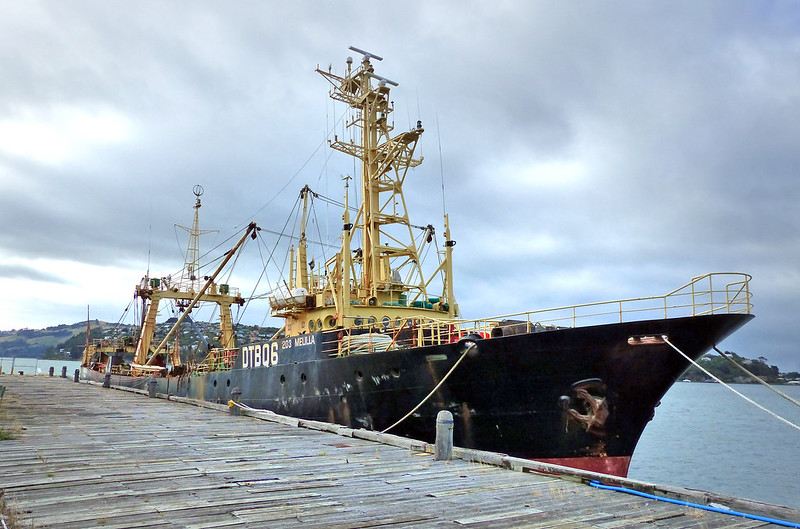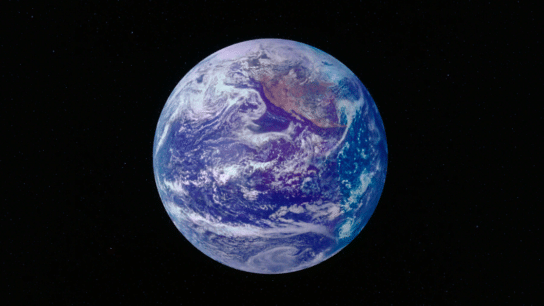According to the Food and Agriculture Organization (FAO), illegal, unreported and unregulated (IUU) fishing is a long-standing global problem affecting the fishing industry. IUU fishing behaviours include fishing without a valid licence, misreporting catch data, falsifying or concealing a vessel’s identity or itinerary or obstructing the work of inspectors or enforcers. These activities are referred to as “serious violations” in the Fish Stocks Agreement, which aims to ensure the long-term conservation and sustainable use of straddling and highly migratory fish stocks.
—
These fishing activities contravene domestic or international law, and/or undermine measures of Regional Fishery Management Organisations (RFMOs), which facilitate intergovernmental cooperation in fisheries management in the high seas. Some of their major tasks include collecting fisheries numbers, making management decisions and monitoring fishery activities.
European legislation establishes a presumption of IUU fishing in respect of these and other activities, such as engaging in unauthorised transshipments, or participating in fishing or fisheries support operations with vessels on an IUU blacklist.
Why Does Illegal, Unreported and Unregulated Fishing Exist?
IUU fishing is highly attractive to fishermen because no taxes or duties on catches are paid. Additionally, it can often be practised with impunity, especially in territorial waters or exclusive economic zones of countries which cannot afford to set up costly and complex fisheries control structures.
According to the World Ocean Review, the situation is especially difficult in developing countries. It is found that IUU fishing is mainly practised in countries which exhibit typical symptoms of weak governance: large-scale corruption, ambivalent legislation, and a lack of will or capacity to enforce existing national legislation.
The IUU Fishing Index benchmarks 152 countries according to their exposure and response to IUU fishing. Three types of indicators are involved.
- Vulnerability: the risk of exposure to IUU fishing
- Prevalence: known or suspected IUU fishing
- Response: actions taken by a state to reduce IUU fishing
Many developing countries in Africa, Asia and Oceania are regarded as vulnerable areas, primarily due to the lack of state resources to fully respond to the threats posed by IUU fishing. Out of 152 countries, China is the most vulnerable one, followed by Japan and Russia.
Asian regions also score the highest in terms of prevalence, with China, Taiwan and Vietnam in the top three.
The Sub-Regional Fisheries Commission (SRFC), comprising seven member states in West Africa (Cape Verde, Gambia, Guinea, Guinea-Bissau, Mauritania, Senegal and Sierra Leone), has produced a detailed list of the various causes of IUU fishing:
- The lack of trained personnel in the relevant authorities
- The lack of authorities’ motivation to invest in relevant personnel, especially in poorer states where they set other priorities.
- Salaries are low for fishermen, and vessel owners take advantage of this to make irregular payments to observers/ fisheries administrators to cover up their activities
- The lack of effective control due to high purchase, maintenance and operational costs of patrol boats and aircraft
You might also like: 15 Facts About Overfishing
What is Being Done to Tackle Illegal, Unreported and Unregulated Fishing?
- Code of Conduct for Responsible Fisheries
The FAO adopted the Code of Conduct for Responsible Fisheries (CCRF) in 1995, which was endorsed by around 170 member states. Although the CCRF is voluntary and non-binding, a number of countries, including Australia, Malaysia, Namibia, Norway and South Africa, have incorporated some of its provisions into national law.
- Vessel monitoring system – the EU system for fisheries control
EU legislation requires that all coastal EU countries should set up a vessel monitoring system (VMS), a satellite-based system that provides data to the fisheries authorities on the location, course and speed of vessels.
The blue box, an electronic device installed on board fishing vessels, regularly sends data about the location of the vessel to the fisheries monitoring centre (FMC) responsible for the area where the vessel is currently fishing. If the vessel enters territorial waters or fishing grounds where it is not permitted to fish, the master of the vessel can be prosecuted.
- Legislation
In order to prevent landings of illegally caught fish in the EU, Council Regulation (EC) No 1005 on IUU fishing was adopted in 2008; this was followed by Council Regulation (EC) No 1224, which established a community control system for ensuring compliance with the rules of the common fisheries policy. The aim is to prevent IUU fishing EU-wide and close any loopholes. According to the Council Regulation No 1005, the current procedure for landing catches in an EU port is therefore as follows:
- A) Before the vessel lands its catch, it must provide reasonable advance notice.
- B) Once the vessel has docked:
- The fishing licence is checked. This includes the vessel’s operating licence issued by the flag state and information showing who is authorised to operate the vessel.
- The fishing authorisation is checked. This contains detailed information about the vessel’s permitted fishing activity, including types of fish, times, locations and quantities.
- The catch certificate is checked. This contains information about the catch currently on board, including where and when it was caught.
- The logbook in electronic format is checked. The master of the vessel must record on a daily basis when and where the fish was caught, and in which quantities.
- Blacklists Practice
Another initiative to combat IUU fishing lies in the blacklists held by the Regional fisheries management organisations (RFMOs), which are international organisations formed by countries with fishing interests in an area. The blacklists include details of vessels which have attempted at some point to land IUU fish at an RFMO port. Port and fisheries control authorities regularly refer to these blacklists. This “name and shame” policy is intended to make it even more difficult for IUU vessels to find ports where they can land their catches.
Featured image by: Flickr

















